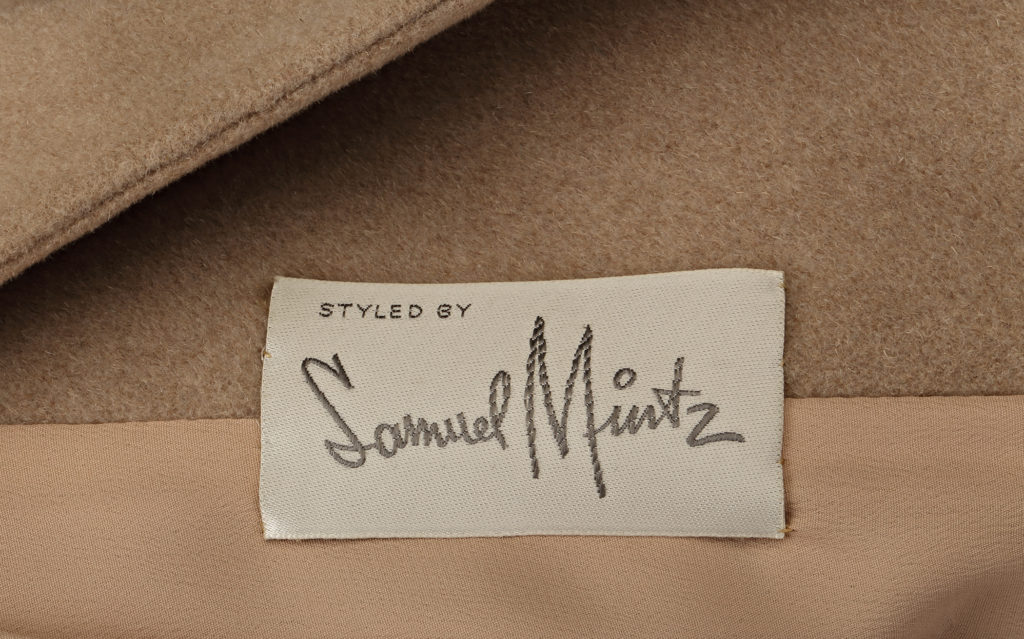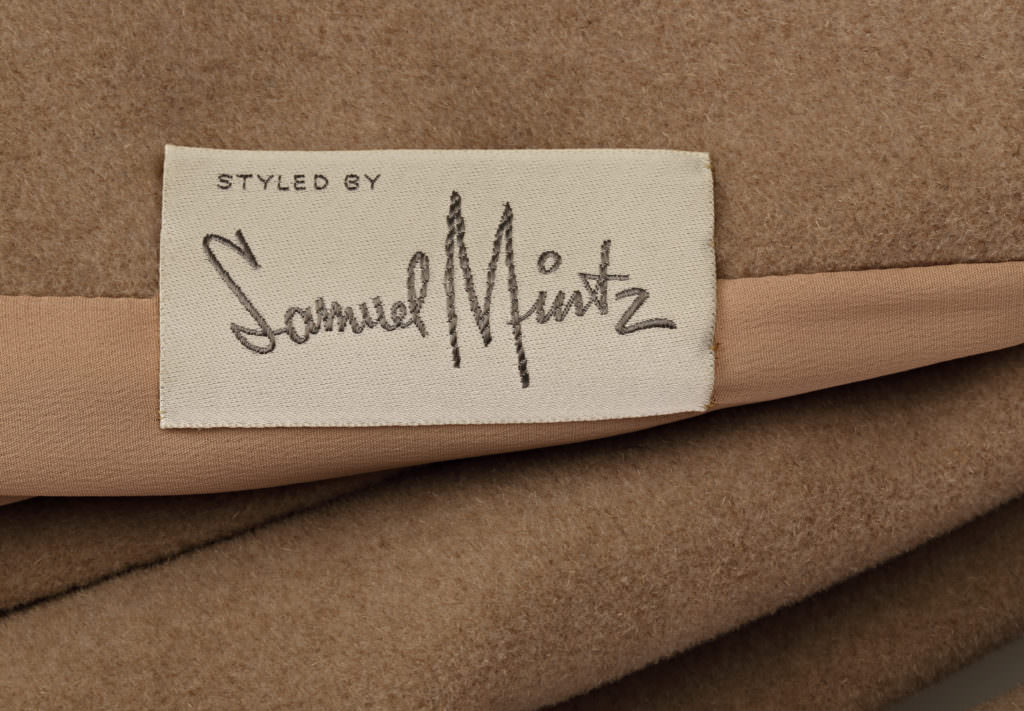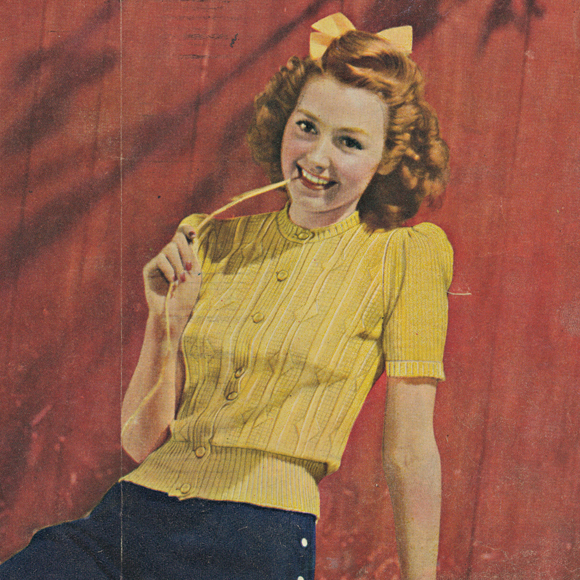
Coat (detail), Samuel Mintz, about 1957. Gift of Fernande D. Rochon, M2016.19.1 © McCord Museum
A Polish immigrant to Montreal, Samuel Mintz started the women’s clothing manufacturer Mayfair Garment Company in 1933, at the age of 30 years. It was initially listed as a coat and suit company, and Mintz seems to have been both proprietor and designer, though Mayfair also went on to manufacture copies and adaptations of the work of other designers, including Pierre Cardin, Guy Laroche, and Givenchy. Later, the company was listed under the more general category of womenswear, though their offerings remained focussed on coats and suits.
Throughout the 1940s and 1950s, the Mayfair Garment Co. sold fashionable suits and outerwear, primarily in imported English fabrics, following trends in silhouette from the major fashion capitals.
As reported in The Globe and Mail, Mintz emphasized that “although most high style Canadian clothes are adaptations of the latest Paris and New York fashions, they are original in that they must be readapted for our colder Canadian climate.”
To this end, Mintz’s designs often featured fur trim and specialty wools, including Peruvian llama and, in one case, a specially printed floral mohair.

Coat (detail), Samuel Mintz, about 1957. Gift of Fernande D. Rochon, M2016.19.1 © McCord Museum
Mintz and his company operated at a time when it was common to reproduce “line-for-line” copies of well-known designers without a licence. Though some of the copies produced by Mayfair featured labels indicating the original designer (as with a 1958 line of Cardin suits and coats), this was not the case for every reproduction Mayfair made and sold. Canadian department store buyers were enthusiastic about the Parisian copies, and Mayfair garments were advertised at Ogilvy and Simpson’s, among others.
Regardless of the originality of their designs, Mayfair’s coats and suits were notable for their fabrication and the designer’s willingness to experiment with silhouette.
In 1947, Mintz was even credited by Chatelaine magazine as advancing a “radical” new direction in coats, with boxy shapes, oversized sleeves, and shawl collars. He later introduced batwing sleeves, dropped waistlines, and a raglan-sleeved coat in an exclusive French fabric.
Mintz was active in Montreal’s community of coat and suit manufacturers, serving early in his career as president of the Cloak and Suit Manufacturers’ Protective Association, and later as vice president and member of the board of directors of the Manufacturers’ Council of the Ladies’ Coat and Suit Industry of the Province of Quebec. The latter handled relations between manufacturers and their workers, negotiating with unions and addressing industry-wide financial changes.
The Mayfair Garment Co. was a family company, with Mintz’s wife Lily serving as a vice president and their son Harry joining the company in his twenties as secretary-treasurer. Though Samuel Mintz passed away in February 1976, the company continued to exist in some form until its dissolution in 1982.
Sources
Boggiss, Ivor W. “Montreal Producers Cite Non-Union Output Inroads.” Women’s Wear Daily, January 26, 1953.
“Canadian Coat Heads,” Women’s Wear Daily, February 27, 1948.
“Cardin to Design for Canadian Manufacturer.” Women’s Wear Daily, April 23, 1958.
“Copies of Paris.” The Gazette, September 8, 1960.
Jukes, Mary. “Predicts Little Favor Here for Extremely Narrow Line.” The Globe and Mail, June 16, 1953.
“Ogilvy’s Presents New Fall Wools.” Ottawa Citizen, September 25, 1947.
“Printed Mohair in Canadian Show.” Women’s Wear Daily, April 22, 1958.
“Spring Preview.” The Gazette, March 18, 1952.
“Taking Coats in Your Stride.” Chatelaine, October, 1947.
“What Has Paris Done to the Bustline?,” The Gazette, September 7, 1954.
Writing
Laura Snelgrove, Contributor
Share
DownloadRecommended entries
© MCCORD STEWART MUSEUM 2025





